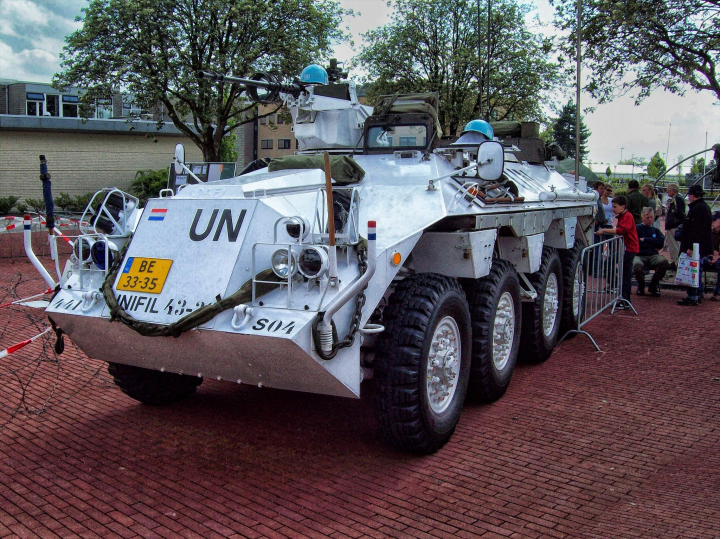Threat Assessment and Training Blog
The Benefits of Certified Training
Good training can be hard to find. Before investing in a training program, organizations have to be sure that it will be an effective and efficient use of resources. This is especially true when agencies oftentimes have to budget for multiple costs – paying instructors, trainees, and insurance coverage. IADLEST’s National Certification Program can serve as a vehicle to identify good training. We recently renewed the certification for our online Threat Awareness for Law Enforcement Program, and we wanted to tell you more about what this means for you.
School Threat Assessment and Identifying Active Threats
Lethal and non-lethal violent acts on school property are becoming more and more common, ranging from the most horrific shooting events to schoolyard fights. In this post, we will describe school threat assessment and the challenges associated with school safety. Also included are resources on critical topics. Lastly, we describe how active threat assessment and situational awareness training can help school personnel prevent violence.
Threat Assessment Training: Identify and Defend Against Your Threat
The type of threat assessment you need may vary based on the type of problem you are trying to solve. In this post, we share various research and resources related to threat assessment training and our own active threat assessment methodology.
Active Threat Assessment: Identify Potential, Imminent, and Immediate Threats
Active threat assessment is an observation methodology that can help you identify threatening individuals or groups who require immediate attention while dismissing people who don’t present a true threat. This method involves systematic observations, recognizing people who deviate from the pattern of consistent behavior, and identifying persons of interest (POI) who warrant further investigation. This methodology can also help you assess threat indicators, which can help you conduct safe and effective interdictions with POIs when necessary.
Active Threat Assessment in Healthcare Security
In this interview with Mike Hodges and Brine Hamilton of the Proactive Security Podcast, Pete Forth and Nathan Meehan of Second Sight discuss the active threat assessment methodology and its application to healthcare security.
Before Defensive Tactics: 5 Training Approaches for LE-Citizen Encounters (Part II)
There are a number of training approaches recommended to heal police-community tensions, including procedural justice, implicit bias, de-escalation, and CIT. These approaches involve assessment, decision-making, and communication. In the second of this two-part series, we focus on de-escalation and crisis intervention training.
Before Defensive Tactics: 5 Training Approaches for LE-Citizen Encounters (Part I)
There are a number of training approaches recommended to heal police-community tensions, including procedural justice, implicit bias, de-escalation, and CIT. These approaches involve assessment, decision-making, and communication. In the first of this two-part series, we focus on procedural justice and implicit bias training.
An Interview with the Managing Violence Podcast
In this interview on the Managing Violence podcast, Joe Saunders and Nathan Meehan discuss the origin of active threat assessment, systematic observation, and ways of identifying potential threats.
About Situational Awareness - Second Sight on Applied Science Live
Check out a podcast interview with Second Sight’s Director of R&D about the application of research to practice and our new Situational Awareness for Safety Program.
How Good Are You Really At Assessing Potential Threats?
Training is more than just a lecture and watching someone complete a task. We should train in ways that allow us to practice our skills. Good training should also assess whether or not we can successfully execute these skills. This is where evaluation comes in.
Should All Training Be Online?
Online training is not a panacea. It is not a replacement for instructor-led training. But there are distinct benefits, and downsides, to each type of training delivery.
Measuring Threat Assessment Skills – Evaluating Knowledge Gain
We all know that some trainings are required and “buts in seats” may be the only thing that matters. In other cases, you may want to makes sure your officers learned something. This is why we evaluate. The second level of training evaluation is learning – assessing measurable skills that a trainee takes away from a course.
Why Experience Matters: Stress Inoculation in Active Threat Assessment
Experience matters especially when dealing with stressful situations. Stress inoculation training is an approach that involves exposing trainees to gradually more stressful situations, allowing them to better handle hazardous or dangerous events or people they may face while on duty.
Instructional Design and Active Threat Assessment Training
The tenants of instructional design can help you develop more efficient and effective training.
Keep Your Eyes on the Prize: Active Police Threat Assessment Training from Observation to Interdiction
In police threat assessment training, and any form of training that involves interaction with people, it is important that it incorporates the human interaction and safety component associated with an interdiction. This doesn’t necessarily apply to all forms of threat assessment (other than active threat assessment), but is relevant in defensive tactics, verbal communication, or any training that involves police interaction with the public.
The Origin Story of Active Threat Assessment for Law Enforcement: The Identifying Threats Program
Learn about the origin of active threat assessment for law enforcement through the Just Doesn’t Look Right Project and the Identifying Threats Training Program.
The Importance of Active Threat Assessment: A Focus on Vocabulary
Your officers have a “lingo” they use when communicating. This lingo, vocabulary, or glossary of terms allows them to quickly and efficiently talk to one another. Without this threat assessment vocabulary, it will take them longer to transmit information, give and receive orders, and may result in miscommunication.

















